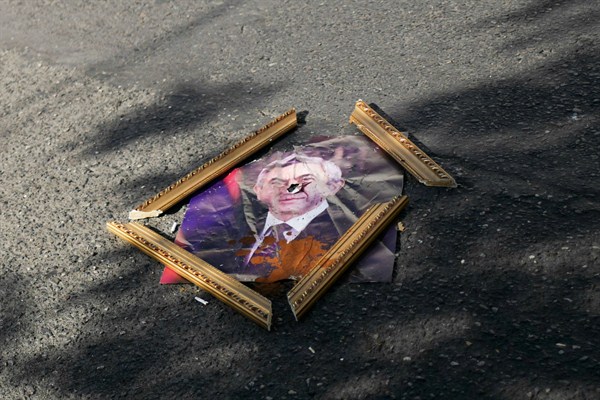An armed standoff and the eruption of protests in July may be Armenia’s most serious political crisis since 2008, when thousands took to the streets against alleged voter fraud in the presidential election that year.
Last month’s unrest, which marked the country’s fourth summer in a row of turmoil, has exposed the cross-cutting, often contradictory fissures within Armenian politics and society. But this time, it also potentially represents a turning point for Armenia’s frustrated population. With internal crises looming over both state legitimacy and settlement talks with Azerbaijan over the disputed territory of Nagorno-Karabakh, Armenia is as divided as ever in a period of growing uncertainty.
Trouble began on July 17, when a group of ultranationalist gunmen seized a police station in the Erebuni district of Yerevan. Calling themselves the “Daredevils of Sassoun,” a paean to the zealous militants in an Armenian medieval epic, the gunmen demanded the release of political prisoners and the resignation of Armenian President Serzh Sargsyan, calling on Armenians to take to the streets in support of their demands. Thousands heeded the Daredevils’ call, and demonstrations filled Yerevan, culminating in a brutal crackdown by state security forces on July 29, which dispersed the peaceful protests and left dozens of demonstrators hurt, some of them severely. Two policemen were also killed in July.

